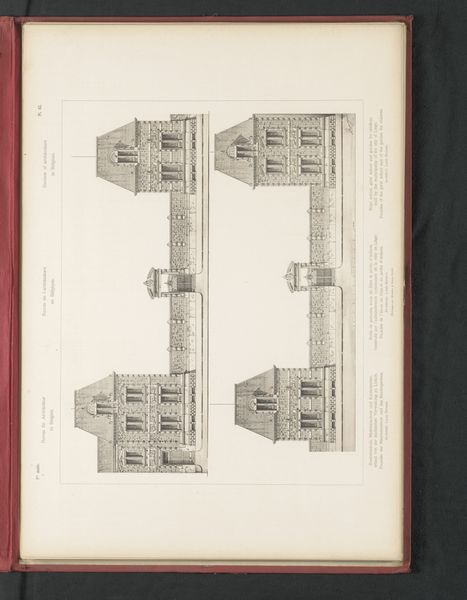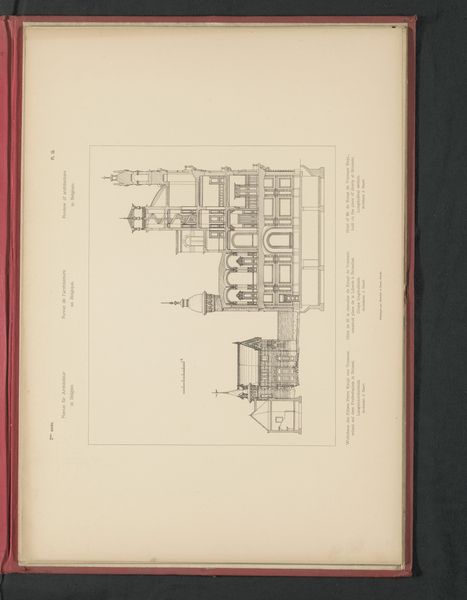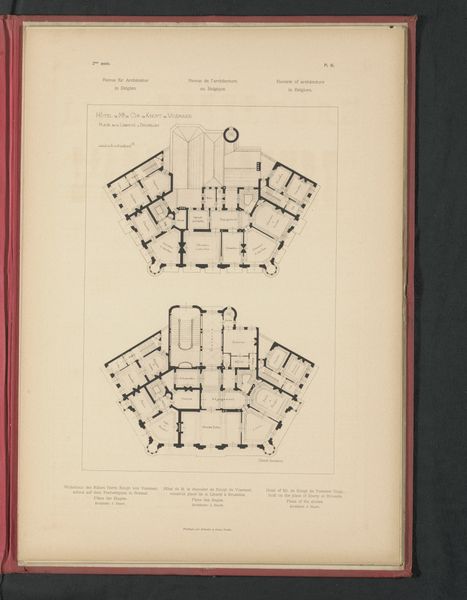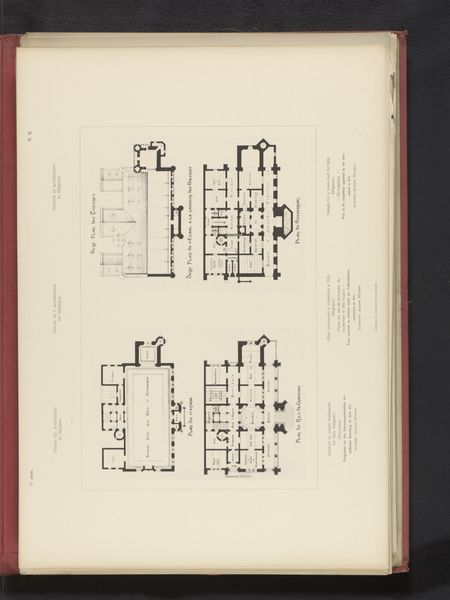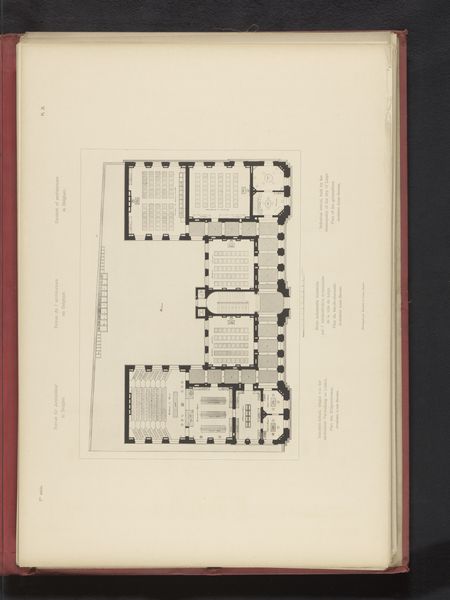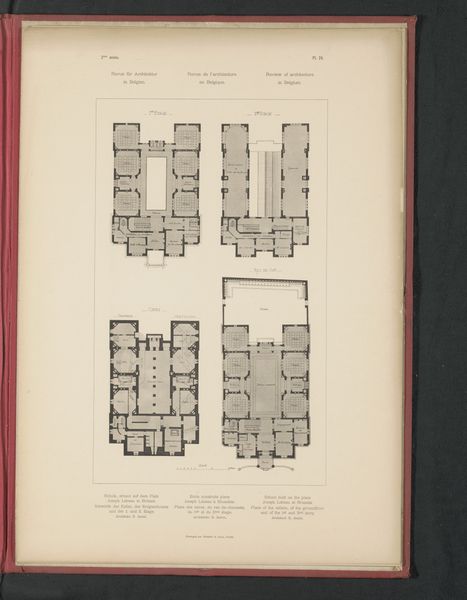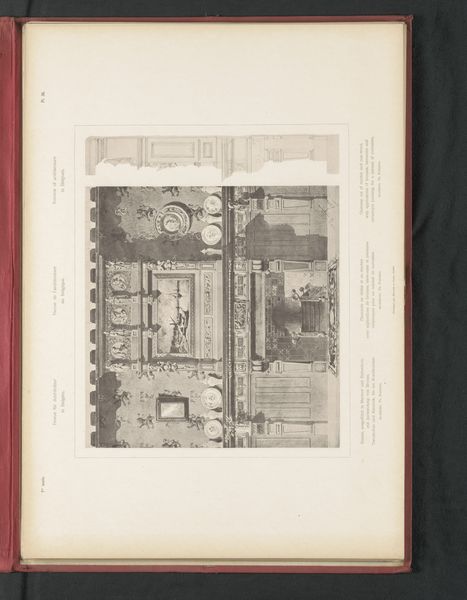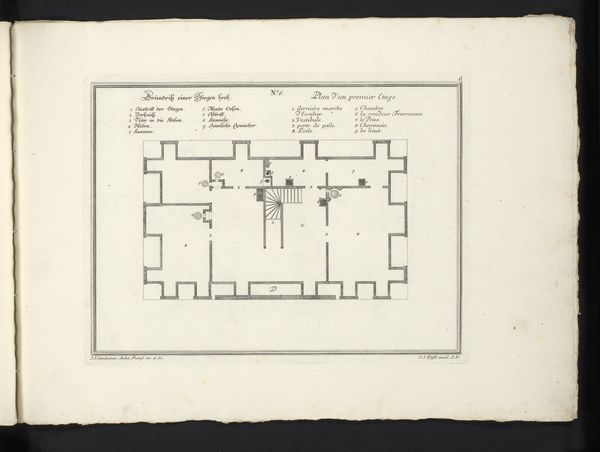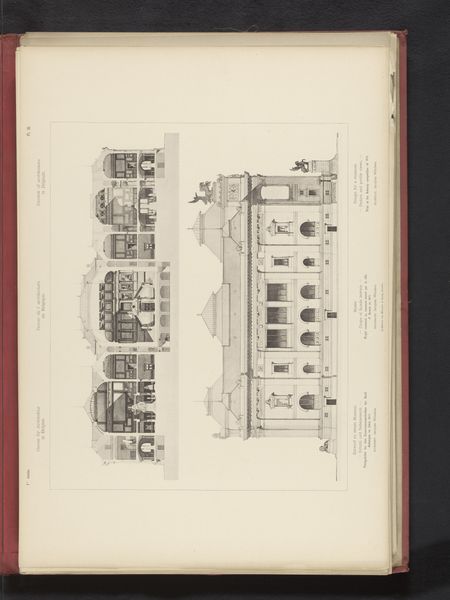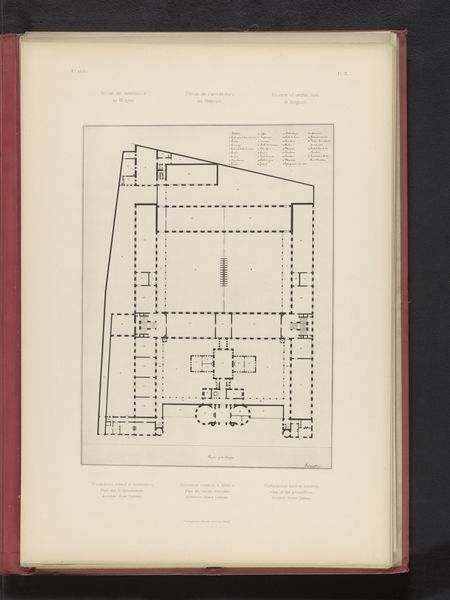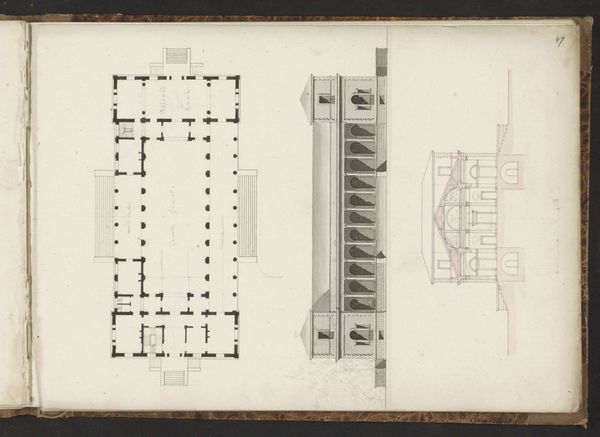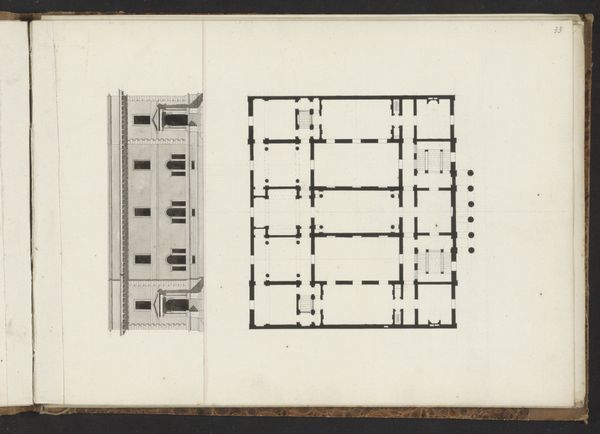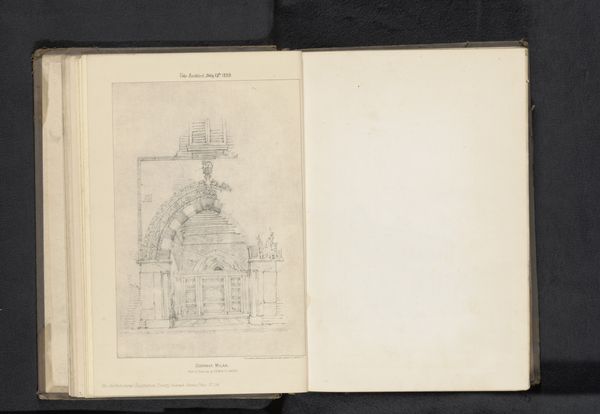
Reproductie van een ontwerp van een dwarsdoorsnede, een reproductie van een plattegrond en een reproductie van een ontwerp van een zijaanzicht van de Sint-Bavokerk in Lauwe, België, door L. Degeyne before 1893
0:00
0:00
drawing, print, paper, ink, architecture
#
drawing
# print
#
paper
#
ink
#
architecture
Dimensions: height 357 mm, width 502 mm
Copyright: Rijks Museum: Open Domain
Curator: Let's delve into this intriguing architectural drawing. Editor: We're looking at a reproduction, made before 1893, of architectural plans for the Sint-Bavokerk in Lauwe, Belgium, by L. Degeyne. It combines cross-sectional, plan, and side views, all rendered in ink on paper. I'm immediately struck by the precision of the lines and the sheer labor involved in creating such a detailed representation. What draws your eye? Curator: It’s precisely that sense of labor that I find compelling. Before mass production, these architectural renderings were meticulously hand-drawn, revealing the physical investment in planning these massive structures. The drawing itself is not merely a representation but also evidence of production. Editor: So you're saying the value is in seeing the trace of the maker? Curator: Exactly! Look at the hatching and the layering of lines – these are the marks of the drafter's hand, the person responsible for materializing the architect’s vision into something tangible. It begs the question: How did this impact the design? The choice of materials also informs our understanding. Why was ink and paper chosen? Were they readily available? Cheap? What does the scale suggest about the patronage or intention? Editor: That's fascinating; I never considered the social context of the materials themselves! So, beyond just the architectural design, we're looking at the socio-economic implications embedded in the production of this drawing? Curator: Precisely! The materiality tells a silent story of labor and resources. It recontextualizes high architectural ideals into realities dictated by production and accessibility. Editor: Wow, I’ll definitely view these kinds of works differently now. I guess I was only focusing on what it represented, rather than how it was made, and the context behind those decisions. Curator: Indeed. Looking closely at how things are made helps unveil so much that goes unsaid about labor and the systems behind them.
Comments
No comments
Be the first to comment and join the conversation on the ultimate creative platform.
